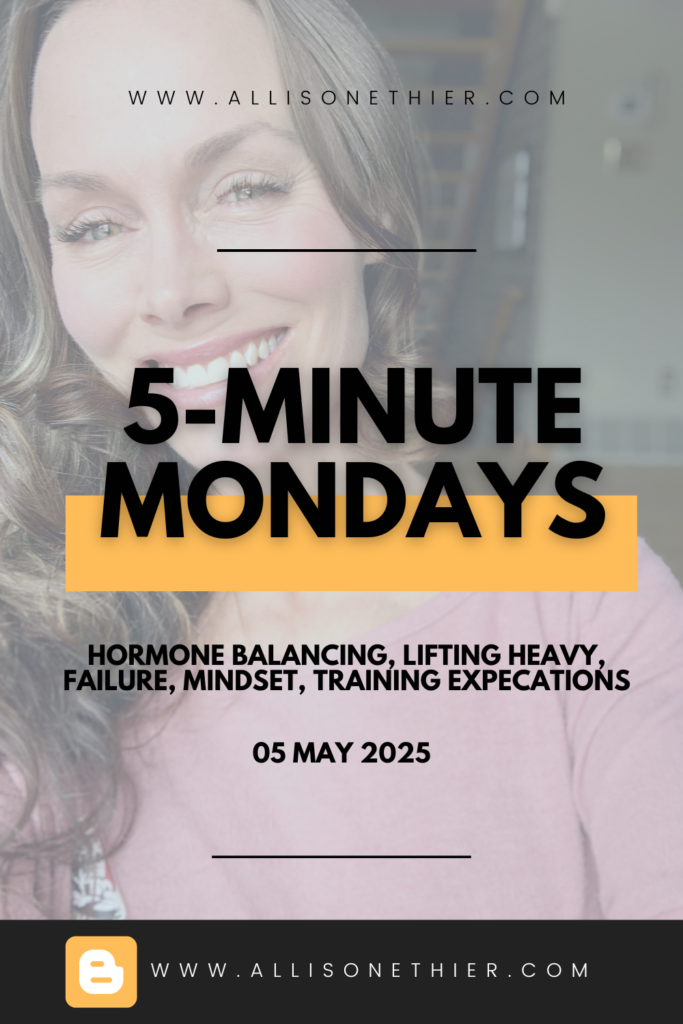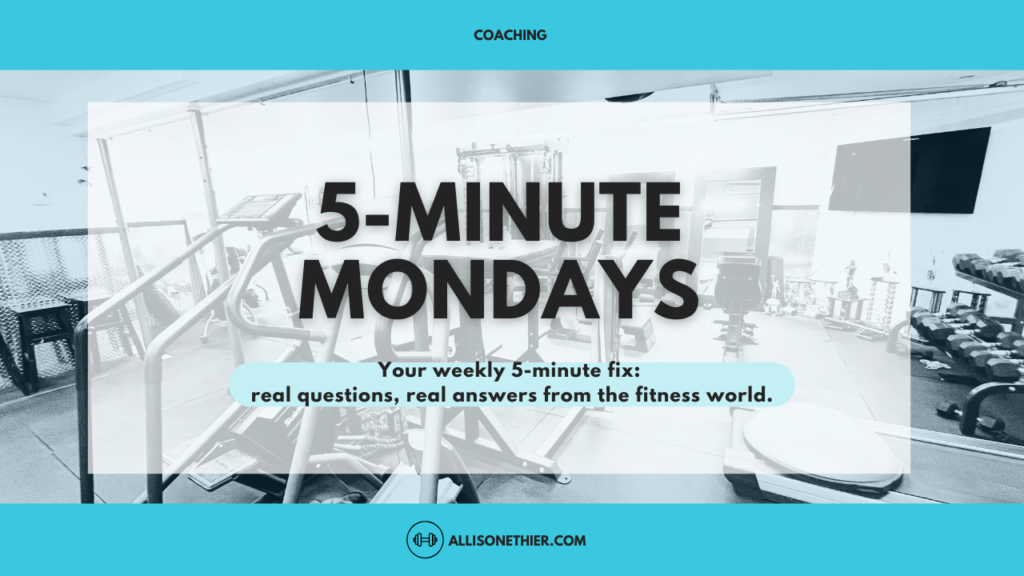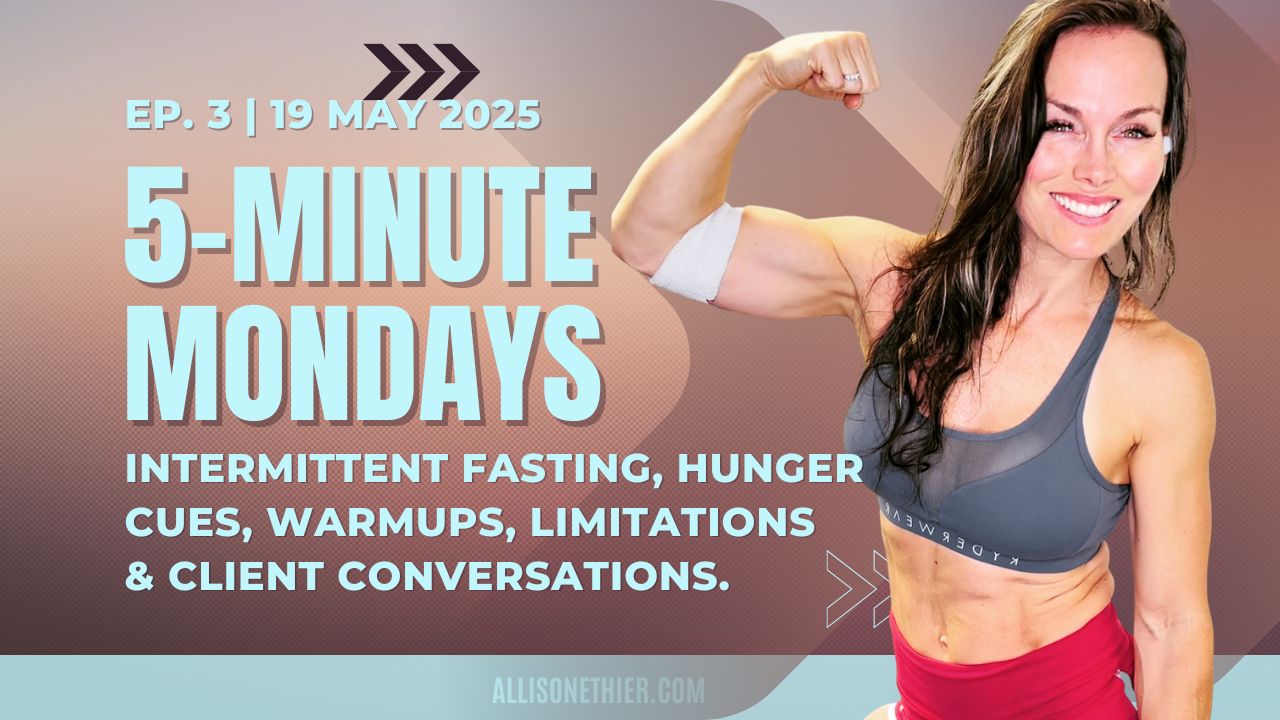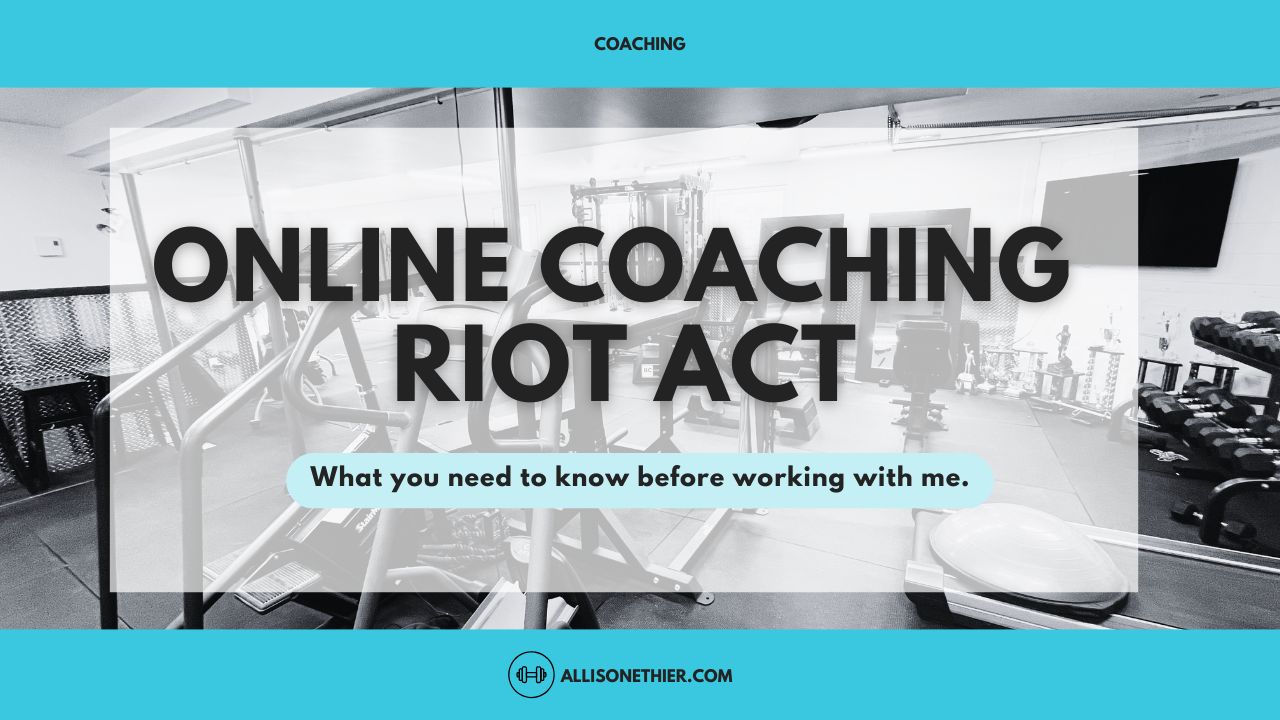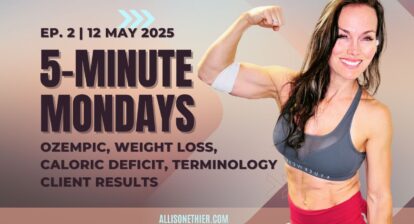Welcome to the very first edition of 5-Minute Monday—a quick, power-packed video breakdown to kick off your week with clarity and momentum.
In this episode, I’m reviewing a video sent in by one of my clients.
We’re diving into some key concepts around bulking effectively, lifting heavy with proper form, working in lower rep ranges (like sets of 4), barbell training, and best practices to help you fast-track your strength and fitness progress.
Whether you’re a beginner wanting to build muscle, or someone more experienced looking to level up your training, this bite-sized review will give you practical takeaways you can apply right away.
Transcript
Hey, what’s up, guys? Welcome to my video version of the five minute Monday, where I take a look at some of the trending videos that have been posted on social media or something that a client has sent to me, and then I just try to add a little bit of context to it and answer those questions that come along with training studio clients in my studio to help support their information toolbox and their fitness journey.
If you’ve just joined me, my name is Allison Ethier. I’m an online coach and personal trainer, and I do have a small training Training Studio in my house, as well as I do online coaching for those who want to lose weight, build muscle and stay strong, as well as maintain the results as a lifestyle.
And so let’s get into the video for this week.
Bulking Up
I’ve been lifting for 25 years, and I’m trying to bulk up like purposefully, and it hasn’t happened yet. It takes quite a bit of training in order for you to do it. In the beginning, it’s a little bit easier for you to gain muscle, and then as you become more experienced, like I’m talking years, like almost decades, it becomes a little bit harder.
I’m not doing all the things that I need to be doing in order to build the muscle. Like as you become more advanced, things have to become more specific. So in the beginning, it’s really fun lifting heavy, and I’ve posted this online a number of times, is relevant to the person.
I have some clients who earn the right to lift a little bit heavier, like, say, like eight reps, six reps. But typically, none of my clients are lifting heavy.
They’re lifting in the let’s say, 10 to 12 and 12 to 15 range, and they’re challenging themselves. I call it more of like a challenging weight.
Are you learning to push yourself, which, in and of itself, learning to push your push yourself is a skill.
Building Strength
I train clients one or two days per week, and imagine one day a week they do no other, no other structured training, because that’s all that fits into their lifestyle right now, and they’re just trying to maintain some sort of level of strength and fitness.
At 52 workouts per year, if that, if you nailed it, and they still make progress on their strength training. But mind you, everything is well organized and it’s tracked, and we know exactly how to adapt the training to the client, because they show up week to week.
You have to learn how to lift and move with light weight and proper body technique before you can even consider lifting heavy. Okay, you have to learn to lift at your level. That should be the key message here.
Ideal Rep Ranges
The other thing she talks about is four sets of four reps, and then four sets of eight reps. I have never prescribed four reps to any of my clients, usually even at zero, and they’re starting from a fundamental baseline. It’s going to be eight to 10 reps, and then we’re assessing tolerance to exercise and what you feel like the next day, like the delayed onset muscle muscle soreness kick in after the small workout we did together, you know.
We assess from there, and then we progress from there. It’s just not a lot of volume long term, especially if my clients want weight loss with it. 12 total sets for a workout is like way minimum. You should get that done in under 20 minutes. You know, 12 working sets. And unfortunately, the video has a lot of barbell work in it, the Olympic barbell. Most of my clients will start with the preset barbell if they have access to it–25lbs to 40lbs.
Once you hit around that 45 lbs you can start moving into the barbell and the squat rack to earn your right to lift with the barbell. And that goes back to your fundamentals.
Compound movements are essential. We do some isolation movements, some core work arms, you know, if there’s time, but you have to earn your right to be. Under the barbell, and you have to prove that your body is strong enough to handle those kinds of loads.
Lifting Heavy
To me, and my clients — that is the foundation of lifting heavy.
The textbook version of lifting heavy is somewhere under six reps. And so yes, four reps might seem like lifting heavy, but what is your load when you’re doing that kind of of work?
And so the key message here, I think, is you have to work with your fundamental movement patterns first. You start with your movement, you build up some tolerance to exercise with reps and load, usually the smaller loads, like 2.5 to five pounds in terms of increments. Then we start to get stronger, and then we start to build some solid muscle, and then we move in that direction, and we stay consistent.
In a year two or three, if you had started from zero, you’re going to be start lifting challenging weights that you can really start pushing yourself. Being able to push yourself is a learned skill, and you have to give yourself time to do that.
Program Design
Another tip I want to give you is try not to change up your program or your exercises too frequently, because the more you practice them, the better you’re going to get at it. If you change your workouts often, then you’re always a beginner and you’re always in a learning phase, and never in a mastering phase. That’s it for me for the five minute Monday, and we’ll see you guys next time on the next episode.
Like and share and if you have any questions, feel free to send them along.
Talk soon.
A.

